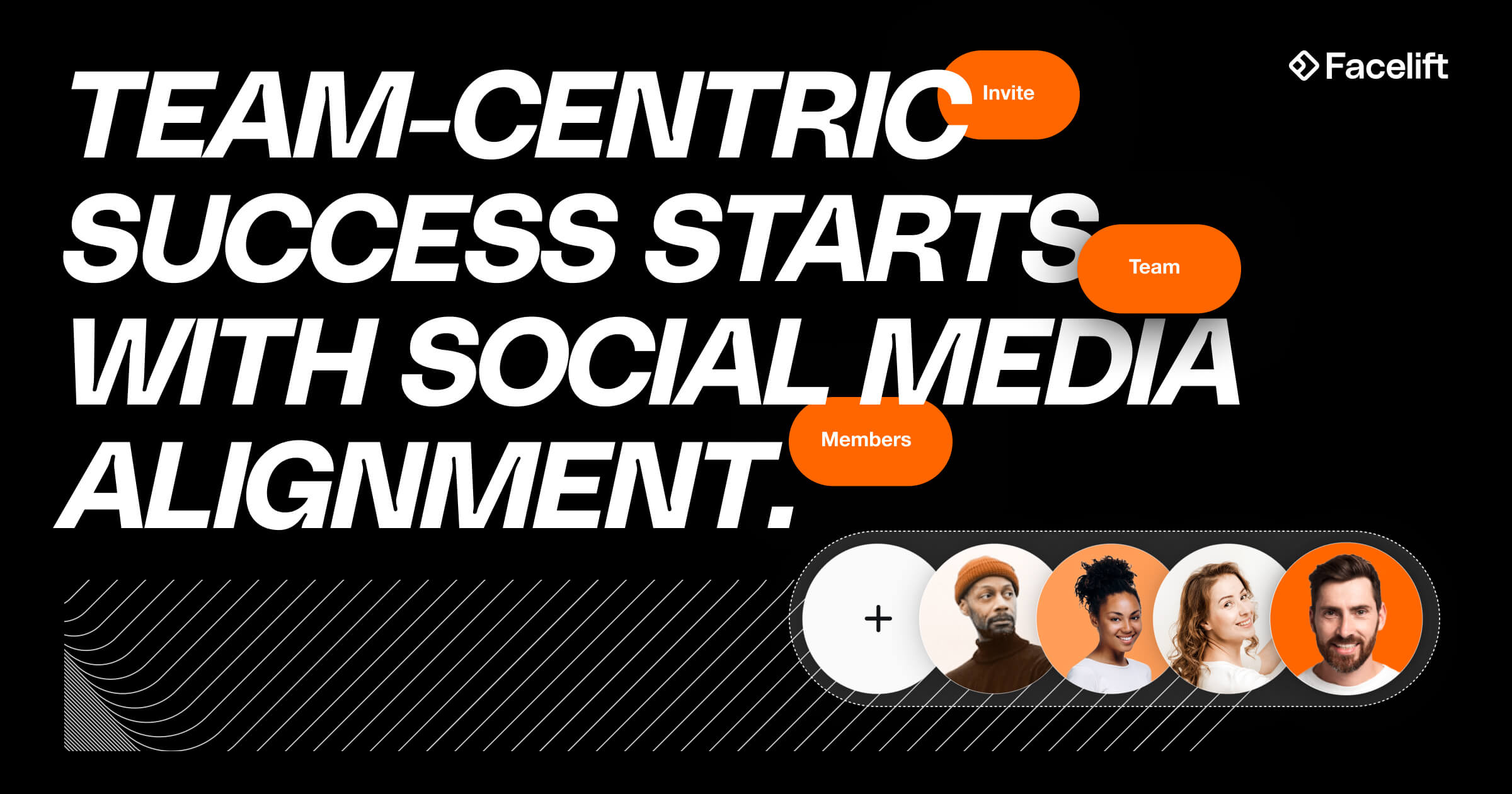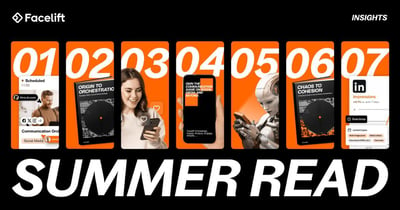ALIGNING TEAMS: BREAKING SILOS AND BUILDING COHESION
In many organizations, social media responsibilities are way more scattered than they should be. There's little that is more frustrating to a social media manager than having to fight your own company to create, publish, and handle all your content. And don't even get me started on branding across regional offices. This has a nasty habit of causing misaligned messaging, duplicated efforts, and opportunities that slip through the cracks because it's not always clear where one person's job ends and another's begins.
One of the key ideas behind social media orchestration is that it unites these fragmented teams under one banner by:
- Establishing shared objectives: Everyone understands how their work contributes to overarching goals and sees the reason to participate in these contributions fully.
- Providing centralized planning tools: Teams collaborate more closely and in real-time, regardless of department or geography.
- Fostering accountability: Clear roles, workflows, and accountability processes ensure nothing falls through the gaps. This also means simplified but robust approval processes.
Example: Orchestrating a Global Holiday Campaign for a Luxury Retailer
A luxury retail brand launches a holiday campaign, “Gifts That Endure,” with the goal that it’s a fully orchestrated social media strategy rather than just a marketing campaign. To do this, they implement:
- Shared planning hub: The global marketing team uses a centralized tool to align campaign timelines across regions. Teams can see when localized content will be published, ensuring no overlap or scheduling gaps between global and local efforts.
- Content variation within brand unity: Instead of merely adapting the global message, regional teams work within a shared topic architecture. This way, consistent brand themes (luxury, sustainability) remain apparent while the messaging is customized to really connect with local audiences. For example, the U.S. team highlights holiday partnerships with charitable organizations, while the French team features boutique shopping experiences in Paris. These efforts are localized, not fragmented.
- Integrated engagement workflows: Customer support teams are integrated into the campaign from the start. They can access campaign-specific assets (such as FAQs and tone guidelines) to respond promptly to social media inquiries. Cross-team workflows ensure leads from campaign-driven Instagram ads are flagged for sales follow-ups in real time.
- Unified analytics: Rather than tracking results in regional silos, orchestration tools consolidate metrics into a single dashboard. The brand compares performance across markets, optimizes based on what’s working, and shares insights globally to replicate success.
This is different because traditional campaigns often focus on execution by individual teams—each doing their part but operating in silos. When organizations orchestrate their content, they work in an end-to-end process. All of their content, comments, and other types of customer interaction contribute to the same business goals, avoiding duplication and misalignment.
ALIGNING TOOLS: STREAMLINING YOUR SOCIAL STACK
Juggling multiple tools for scheduling, engagement, analytics, and reporting is a recipe for inefficiency. When the balls come tumbling down, content product, community management, or other efforts usually come to a standstill.
Disconnected tools create silos, leading to wasted time, fragmented data, and inconsistent insights.
Social media orchestration simplifies your tech stack by:
- Centralizing functions: A single platform for planning, publishing, engagement, and analytics eliminates redundancies and reduces costs by alleviating the need for multiple disparate platforms.
- Integrating seamlessly: Orchestration tools can connect with CRMs, design software, and ad platforms to unify workflows.
- Providing real-time visibility: Everyone works from the same data and with the same guidelines so that there is consistent decision-making.
Example: Using orchestration tools, our luxury retailer’s marketing team tracks how Instagram Reels and localized Facebook ads drive traffic to the “Gifts That Endure” landing page. Regional managers must track their local performances and contribute to the global campaign performance. They can share performance insights via a unified analytics dashboard, refining ad spend for markets with the highest conversion rates.
Meanwhile, customer support integrates holiday FAQs into their engagement workflows, resolving inquiries faster and boosting satisfaction.
So why does all of this matter?: Orchestration allows the retailer to scale globally while keeping every interaction or touchpoint in line with the brand’s premium positioning.
ALIGNING GOALS: CONNECTING SOCIAL MEDIA TO BUSINESS OUTCOMES
When social media strategies are disconnected from business goals, teams focus on vanity metrics like likes and shares instead of more meaningful outcomes like recurring revenue, reducing churn, review management, or top talent acquisition.
Social media orchestration ensures your efforts ladder up to organizational success by:
- Tying KPIs to business objectives: Metrics like engagement and CTR are linked to revenue, customer retention, or brand growth.
- Providing a single source of truth: Unified analytics make it easy to track performance across campaigns and platforms.
- Facilitating informed decision-making: Leadership has the data to allocate resources effectively.
Example: The luxury retailer leverages orchestration to align its campaign with measurable business objectives. Marketing sets KPIs focused on website traffic, regional sales uplift, and producing marketing qualified leads (MQLs) via newsletter signups. All of these goals are interconnected, and our brand thinks of them as such.
Why it matters: With aligned KPIs, the retailer achieves a cohesive campaign that drives measurable outcomes - particularly those of a financial nature - rather than disconnected efforts that dilute the brand. Everyone likes to know that their follower count is up, but it's really only relevant if those followers are contributing to business goals.
THE IMPACT OF ALIGNMENT
When teams, tools, and goals are in sync, your social media efforts become more than the sum of their parts. You’ll see benefits like:
- Consistent messaging: Your audience receives a unified brand experience no matter where they interact with you.
- Increased efficiency: Teams work smarter, not harder, with streamlined workflows and better collaboration.
- Improved ROI: Every effort returns to measurable outcomes that matter to your business.
Disjointed efforts hold your social media strategy back, but social media orchestration transforms scattered activity into cohesive, measurable success. Align your teams, tools, and goals to create campaigns that resonate and deliver real business results.
Curious how orchestration works in practice? Let's have a chat about SMO solutions. We'll help you to see firsthand how Facelift can help you orchestrate a strategy that brings your communications together for the better.






